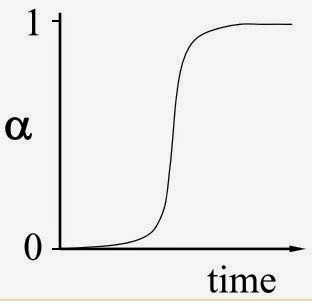My Cute But Weird Dog (obligatory non-technical post)
 So you may or may not know that I have a dog called Alfie. I love him to pieces. I am like a crazy cat lady except instead of spreading my affection over 20 cats I give it all to just one doggie. Alfie is the sweetest thing. But he is very weird sometimes...
So you may or may not know that I have a dog called Alfie. I love him to pieces. I am like a crazy cat lady except instead of spreading my affection over 20 cats I give it all to just one doggie. Alfie is the sweetest thing. But he is very weird sometimes...
Here are two pictures of him in some positions he deems 10/10 for comfort, would sleep in again. He stayed in the first position for at least an hour and in the second for at least half an hour. I don't even know how a dog can bend its leg under itself like that??
ThermoPLASTIC Stuff! ((1-2))
If you want to buy these from the polymer shape they come in the form of "solid matter" (pellot like things) Polymer chains already created!Crystallization and Alien Geometry Races
In one of my previous blogs I talked about crystallization of a polymer. This occurs when a Thermoplastic crystalline is slow cooled. All of the polymer chains huddle together as if trying to warm themselves as the temperature falls before freezing completely (woah, that's a morbid analogy). The slower you cool it, the more crystalline it will be although it can never be completely crystalline, it sort of maxes out at about 45%.
It doesn't stop there though after the chains fold themselves into little sheets of folded polymer called lamallae, the lamallae will twist themselves into a circular arrangement like the picture below.
 Once in this arrangement, we call them Spherulites. This is kind of cool because it makes them sound like an alien race of evil spheres. They also look awesome up close (Left).
Once in this arrangement, we call them Spherulites. This is kind of cool because it makes them sound like an alien race of evil spheres. They also look awesome up close (Left).
So... do we think that this arrangement is more or less dense than an amorphous structure (where the polymer strings just hang out in a random arrangement). Its more dense! Which is great because it means that we can measure how crystalline a polymer is just by weighing it.
Report Card For a Highly Crystalline (or dense) Polymer
- Stiffness = A+ all those polymers are hugging each other tightly within their lamallae and spherulites and will not be easily wrenched apart
- Heat Deflection = A+ this means that the polymer now needs to be heated to higher temperatures before it will melt.
- Chemical Resistance = A+ Not really sure why this is, anyone care to share their thoughts
- Hardness = A+ something something that's what she said something.
- Tensile Strength = A+ yes this is different to hardness, tensile strength is like how much weight it could hold and hardness its ability to dent other materials.
- Impact Strength = C- being crystalline makes polymers brittle! If you hit it with a hammer, it will shatter!
- Ductility = C- those polymer chains are just holding onto each other too tightly for there to be much give
As a side note, if you were to assess an Amorphous structure (with the random arrangement of polymers) the results above would be exactly the opposite. Have a think as to why...
MOAR CRYSTALLIZATION!
So if you think crystallisation is really cool you can increase it by doing a number of things.
- Cooling the polymer slower
- Cooling the polymer to the right temperature
- Adding bits of fiber to the polymer - these fibres act as nucleation sites which basically means that crystallization likes to happen there.
ThermoSET Stuff! ((1-2))
If you want to buy these from the Polymer Shop you will find them as either a liquid or solid resin. You have to process these yourself to get your polymer chains and cross links. This makes sense as they can only be processed once!
How do I process My Thermosets?
Thermosets need a little bit of encouragement in order to start reacting and forming their strong covalent cross links. They need a catalyst such as heat, pressure, UV light and sometimes they just need time. Once you get them going though they produce A LOT OF HEAT! This is because they are exothermic (meaning they release a lot of energy when reacting).
I know what some of you clever sods are thinking, "but they degrade in high temperatures, doesn't that mean that they will kill themselves as they form?" Well yes if left them to their own devices, things don't work out. Which is why heat must be removed and moderated during the reaction.
Stick to Your Strengths!
Thermosets are way stronger than thermoplastics. They are often used for this reason. So when processing them, they should be given the strongest properties possible by being allowed to cure almost completely.
Here's a graph of their cooling over time where alpha is the degree of cure. Obviously you don't want o be waiting around all year for them to be perfect so you have to stop the cure when the graph starts to level out and not when alpha = 1.
The more inquisitive of you may wonder how the degree of cure is calculated. Obviously you can't figure out how far along the cure is by counting all the cross links between the chains. What you can do though is look at the amount of heat released (in the form of enthalpy) and compare it to the total amount of heat that could be released. dHa/dHt = alpha



No comments:
Post a Comment